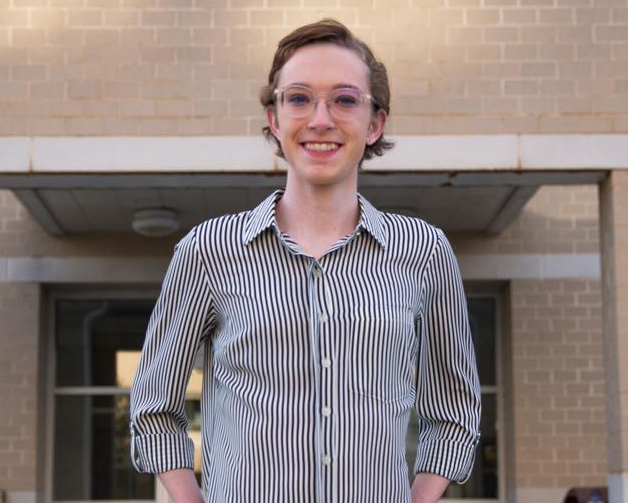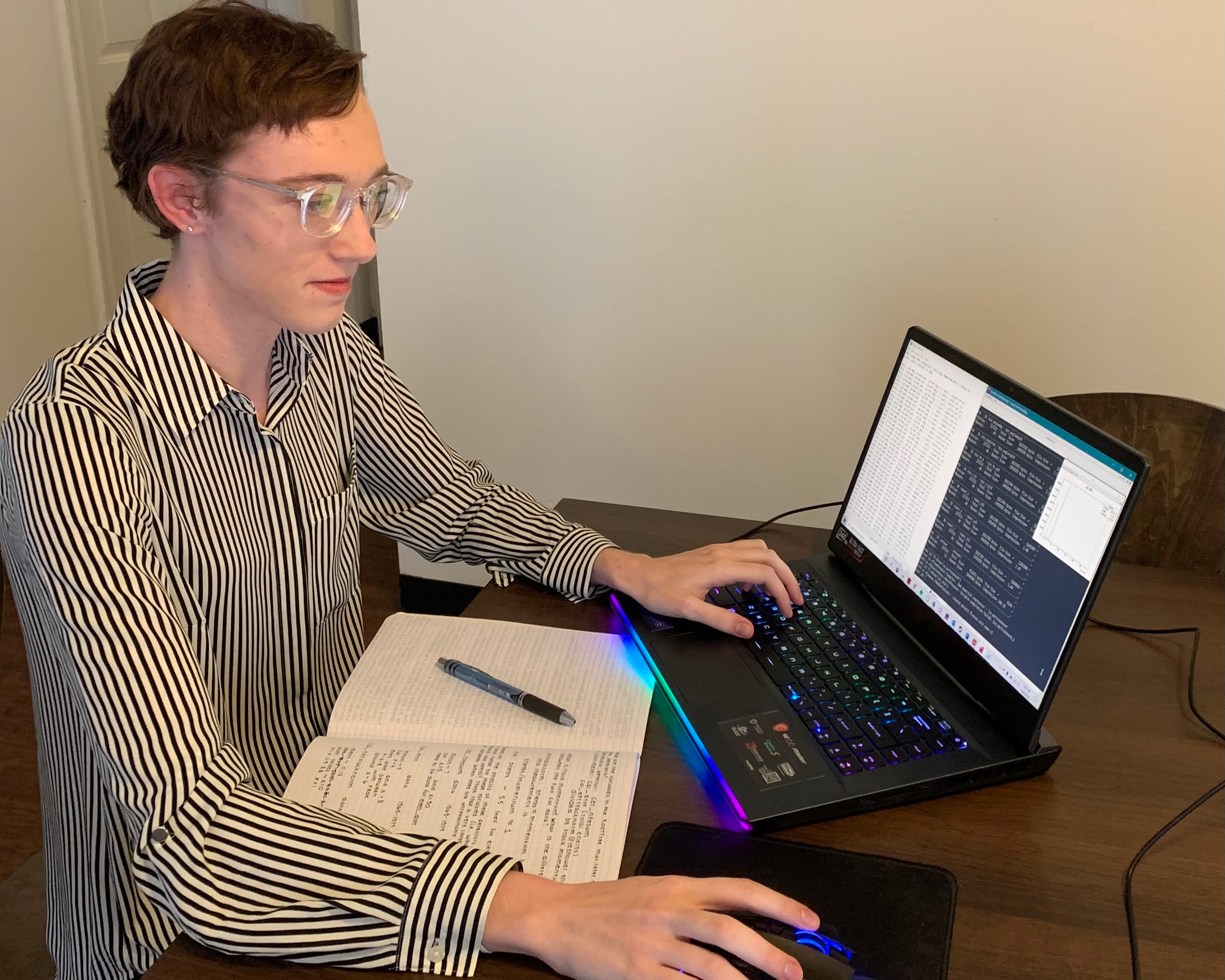Research assistantship awardee changes career path and embarks on upper-level research
Elizabeth Moore has long been interested in physics, though she initially thought her passion for it would simply be a lifelong hobby. As a freshman at James Madison University, she had chosen to pursue a career in music. That was a choice she felt comfortable with, as her mother, a musician, and her father, an aerospace engineer, had always encouraged her to pursue her interests in both fields.
“I was always interested in both music and physics,” Moore explains. “I started playing piano when I was seven, and my dad always did fun science projects and took me to science museums. I thought physics was a good hobby, but probably not my career, because I was focused on music.”
Moore does not think her parents were at all surprised, however, when she changed her major to physics as a junior. And now, she’s cementing that career choice by pursuing research.
Moore is one of two students who is participating in the 2020-2021 Jefferson Science Associates Minority/Female Undergraduate Research Assistantship (JSA M/FURA). The assistantship supports individual projects that contribute to scientific or engineering aspects of the research program of the U.S. Department of Energy’s Thomas Jefferson National Accelerator Facility.
Once she switched her major from music to physics, Moore was all in. She added math as a double major, tacked on a robotics minor, and began looking for ways to get involved in physics research.
“After deciding to become a physics major, Beth started asking me about the research that we do at Jefferson Lab,” said Moore’s mentor and professor Ioana Niculescu. “We started working on the High Momentum Spectrometer research and analysis together.”
New major and providing fresh look at old experiment
Niculescu notes that much of the High Momentum Spectrometer project that she and Moore are working on involves computer coding and data analysis of an experiment that ran in early 2018.
“We ran the first HMS experiment in 2018 or so,” Niculescu says. “After the experiment, it takes years for graduate students, postdocs and lab Users to understand and analyze the data.”
“My first couple of weeks in this research involved just learning how to handle this kind of data,” says Moore. “It was a big step for me—not having much coding experience and going into data analysis. There’s a lot of raw data and a lot of what I do is simply cleaning up the raw data to see if it lines up with what we expect to happen.”
“Beth is very motivated. Looking at data from the lab is very daunting; it’s a steep learning curve—especially for an undergrad,” says Niculescu. “We would give her little projects and she would take them and learn about them and try to do it all on her own, which is really good for an undergrad.”
Networking and moving forward
In addition to being invited to attend weekly meetings with lab users since earning the assistantship, Moore also credits social media with her expanding network of physicist colleagues—particularly women and minority physicists.
“Statistically, there are fewer and fewer women and minorities in Science, Technology, Engineering and Math (STEM) as we go from high school to undergrad to graduate to postdoc,” Moore says. “I connect with a lot of physicists on Twitter—many of whom are women and minorities. You hear this story of not having people to advocate for them, and they may be the only women in their department. I think it’s important to lift up women and minorities. It’s important to showcase that they can be really good at what they do and guide them and provide them with opportunities that maybe would be difficult for them to get otherwise.”
Moore also notes the importance of the M/FURA assistantship to the development of her own career.
“I am incredibly appreciative of both Jefferson Lab as a whole for this opportunity and also for my advisors,” she says. “They have been fantastic and they have really guided me, especially Ioana, who is an amazing woman in STEM who has been able to do amazing things in physics."
When she thinks about what she would say to encourage future female and minority students interested in physics, she says, “I think one of the beautiful things about physics and STEM is that you can study these things with or without fitting a certain mold. The universe is there regardless of who you are as a person. The universe will always be there to study. In fact, my dad just pulled out our old telescope. We’re going to go look at the stars tonight.”
The JSA Minority/Female Undergraduate Research Assistantship is for minority or female full-time undergraduate students who wish to work on projects that are part of or are directly related to the scientific or engineering aspects of Jefferson Lab’s research program. This project is supported by the JSA Initiatives Fund Program, a commitment from the JSA owners, SURA and PAE. Initiatives Funds support programs, initiatives, and activities that further the scientific outreach, promote the science, education and technology of Jefferson Lab and benefit the lab's extended user community in ways that complement the its basic and applied research missions.
Further reading
JSA Minority/Female Undergraduate Research Assistantship
JMU Physics Major Has Big Plans Researching Tiny Particles
Jefferson Lab HMS Detector
James Madison University Physics and Astronomy
By Carrie Rogers
Contact: Kandice Carter, Jefferson Lab Communications Office, kcarter@jlab.org



